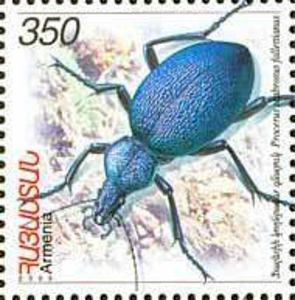Neonicotinoids are the most prominent group of insecticides in the world and are commercialized in over 120 countries for the control of agricultural pests mainly due to their broad-spectrum activity and versatility in application. Though non-target soil organisms are likely to be exposed during application, there is paucity of information in scientific literature regarding their sensitivity to neonicotinoids. This study attempts to fill this gap by evaluating, under laboratory conditions, the chronic toxicity of the neonicotinoids thiacloprid and acetamiprid, through their commercial formulations (CF), to the soil invertebrates Folsomia candida, Eisenia andrei and Enchytraeus crypticus. Results obtained indicate that the relative reproductive sensitivity of the test organisms can be expressed as: F. candida = E. andrei > E. crypticus (for acetamiprid CF) and E. andrei > F. candida > E. crypticus (for thiacloprid CF). To extrapolate from laboratory test results to field conditions, predicted environmental concentrations (PECs) and predicted no-effect concentrations were derived. Calculated toxicity-exposure ratios (TER = EC10/PEC) were below trigger values for acetamiprid and thiacloprid, when estimated with initial PEC. While estimated hazard quotients (HQ = PEC/PNEC), were greater than the European Commission trigger value. Therefore, with the current data under standard environmental risk assessment schemes it can be considered that the risk of thiacloprid and acetamiprid to the soil compartment is unacceptable.
Source:
Renaud M et al. (2018) Chemosphere 194: 85-93
https://www.sciencedirect.com/science/article/pii/S0045653517318799

- Login om te reageren
